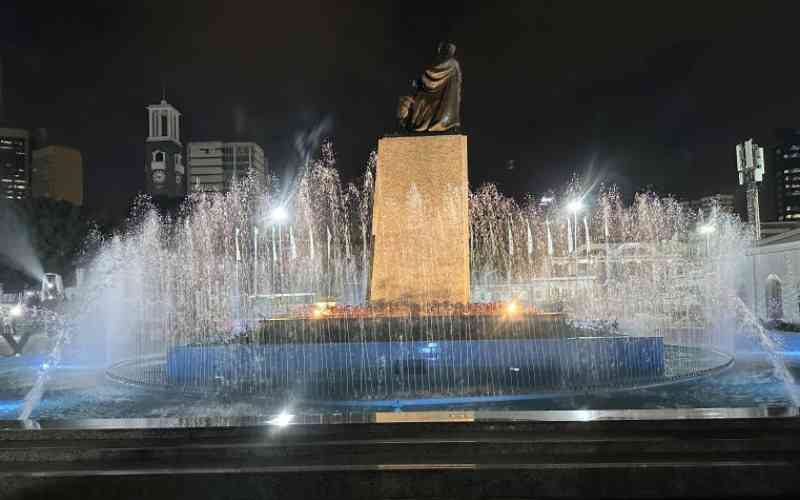
Can you kindly direct me to the River Nile tent, I asked a vibrant Joel, a volunteer guide at the just concluded Africa Climate Summit and Africa Climate Week at the Kenyatta International Convention Centre, Nairobi.
"Every river leads to River Nile. Follow the flow of the fountains and you will get to the tent labelled River Nile," the volunteer guide says.
I had not been to KICC for over 25 years, and here I am asking for directions! The first thing I saw was the refurbished and newly landscaped iconic landmark of the country had been transformed.
The landscaping that has been done seemingly with the idea of catapulting the country's landmark as a tourist and visitor's destination has been awesomely achieved - the beautiful lush green (artificial) gardens and spots for setting up a family picnic (with the permission of management), the artistic dotted sports, with potted flower pots wrapped with the ornamental Kenyan flag.
One of the key attractions not only during Africa's premier event, a "must" do activity for a visitor is a tour of the building's rooftop and helipad, which gives a 360-degree view of the city up to 20 kilometres away, and on a very clear day, it is possible to see Mt Kenya to the North and Mt Kilimanjaro to the South.
KICC is the most iconic place to be in Kenya, and as you walk through the gate, adjacent to the Supreme Court the first attraction is the iconic monument, a statue of the first President of the Republic of Kenya, Jomo Kenyatta. The statue is surrounded by three huge water fountains.
As I follow Joel's directions, I discover that indeed, the destination of the "streams" of water formed by the fountain, ended up at Tent River Nile. There was more! Placed strategically at the entry of the Tent River Nile, was a poster that gave the visitor a quick narrative of what was River Nile, where it was found and the importance of the river.
So informative was the description that delegates and visitors had some homework to do after the event - learn more about the continent's iconic river. The same description was for all the tents that were named after the continent's iconic landmarks.
There were tents named after Africa's iconic markers such as River Limpopo, Lake Chad, among others. The setup of the tents and their revealing names was a major attraction to many delegates and visitors.
At the main entrance to the iconic building are fabulous water fountains. The designer's success can be seen through the mind's eye.
The Kenya Tourism Board and other key organisations in the hospitality industry pitched slots at key exhibition hubs.
Then there were the small, neat, and well-organised 'vibandas' that offered free food, and drinks, including free water for the six days of the event.
At the main gate, opposite the Parliament building (which was an attraction spot), as you entered through the tight but friendly security check, your first stop was at the "Cultural space" a great attraction for visitors to learn about cultural performances and the Continent's traditions and artistry.
The next attractions were the more than five exhibition hubs that were a display of the newest innovations such as electric mobility, a display of the latest innovations in the transport industry.
These too, at times were great spots to listen to amazing stories of some of the innovators and ambassadors of green energy.
I met Owiny Hakim of Uganda in one of the booths. He had cycled for six days from Kampala to Uganda. His bicycle was electrically powered. His mission? To show that an electrical bicycle is the way to go.
Other attractions on offer for the visitor to KICC include the Nairobi historical and cultural tour, the Nairobi historical walking city tour, the Nairobi tour of museums and other monuments, and a tour of the Maasai market, among others.

